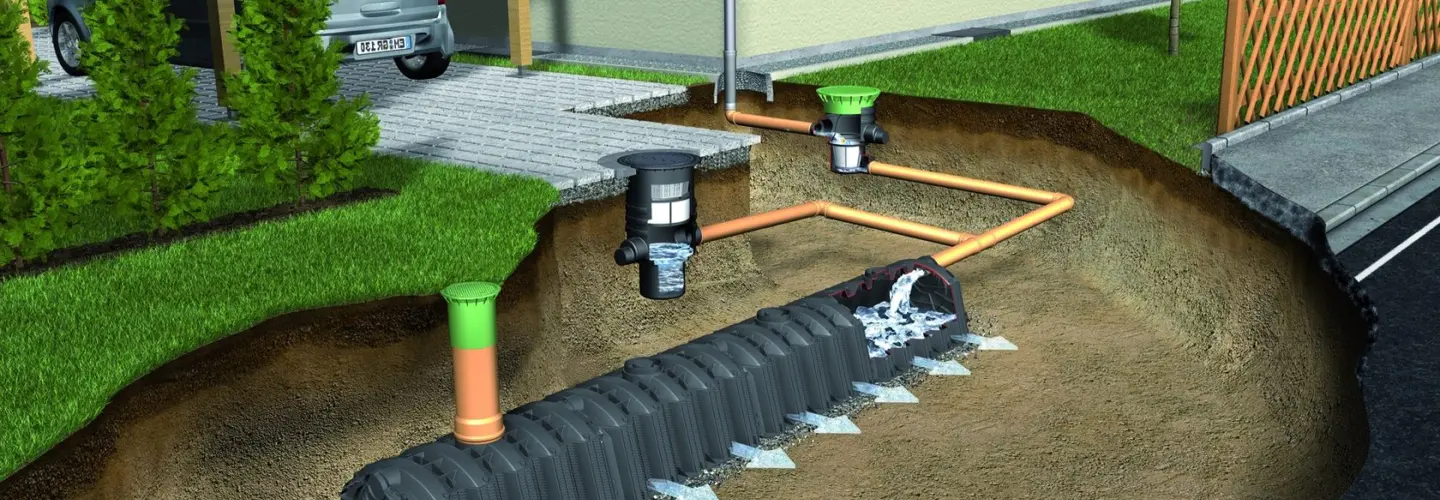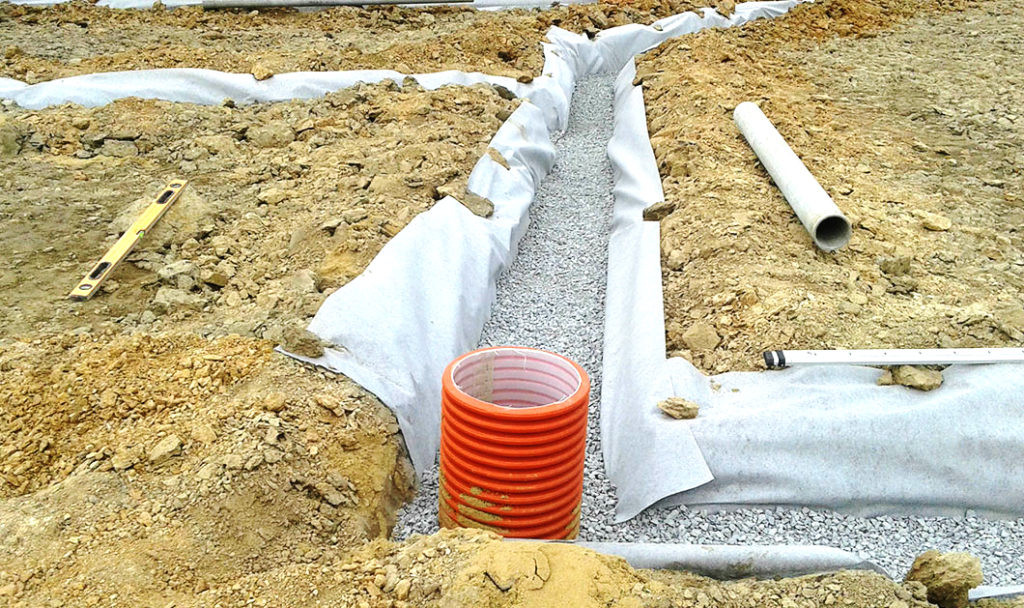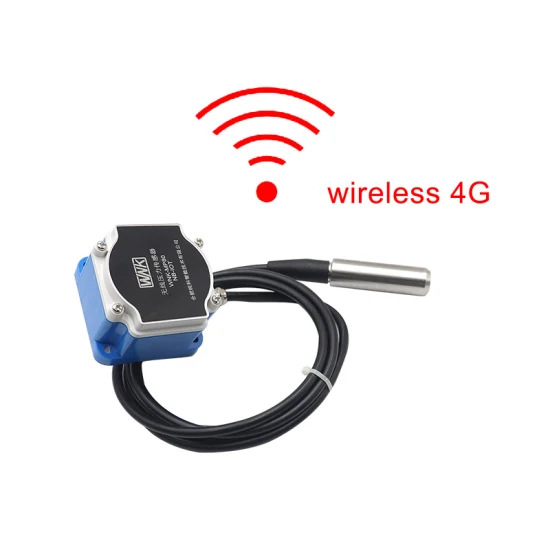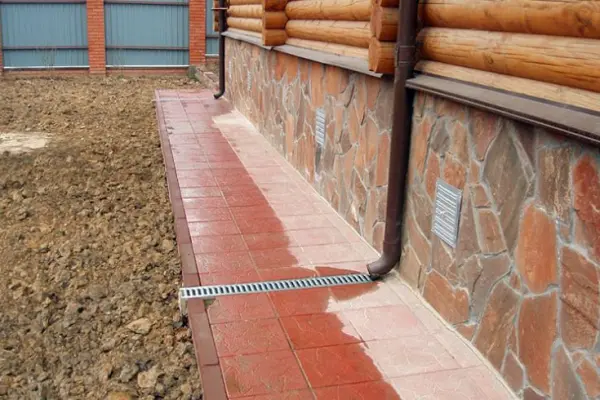In 2025, designing a drainage system remains a critical stage in site development. A properly designed drainage protects the foundation from flooding, prevents waterlogging of the territory, and creates optimal conditions for plants. By the way, every 3 out of 10 country property owners face water drainage problems due to errors at the drainage project design stage.
An effective water drainage system is not just pipes in the ground. It's a comprehensive engineering solution for territory drainage that requires considering many factors: from soil type to site topography. The cost of an error can reach $5,000-10,000 for foundation repair. Have you ever encountered site flooding after heavy rain?
Main Types of Drainage Systems and Their Applications
 The choice of drainage type depends on the site's hydrogeological conditions, development characteristics, and landscape design. Last season, I encountered a site where the owner tried to get by with only surface drainage despite high groundwater levels. The result was predictable. The system failed, and everything had to be redone from scratch.
The choice of drainage type depends on the site's hydrogeological conditions, development characteristics, and landscape design. Last season, I encountered a site where the owner tried to get by with only surface drainage despite high groundwater levels. The result was predictable. The system failed, and everything had to be redone from scratch.
Deep drainage is used to protect foundations and drain sites with high aquifer levels. Drains are laid at a depth of 0.5-1.5 meters with mandatory slope compliance. Surface drainage is effective for diverting rainwater and meltwater from the territory. Wall drainage is a special system that protects basement premises from pressure water, located directly along foundation walls.
Ring drainage creates a protective contour around the building, effective in complex hydrogeological conditions. Linear drainage is a network of ditches or trays for collecting surface water. Point drainage is installed at locations of local water accumulation — under downspouts, in pits. Imagine the drainage system as your site's circulatory system — each "vein" must work flawlessly.
To choose the optimal solution, let's compare the characteristics of different types of water drainage systems:
| Drainage Type | Installation Depth | Application | Installation Cost ($/m) |
|---|---|---|---|
| Surface Linear | 0.3-0.5 m | Atmospheric precipitation drainage | 15-25 |
| Deep Horizontal | 1.0-1.5 m | Foundation protection, site drainage | 35-60 |
| Wall | Below foundation base | Basement protection from flooding | 45-80 |
| Ring | 1.5-2.0 m | Comprehensive building protection | 50-90 |
| Point | 0.5-1.0 m | Local water drainage | 20-35 |
Choosing a specific type requires professional hydraulic calculation considering all features of your site and the drainage project budget.
Key Parameters of Drainage System Design
 Drainage design is impossible without precise calculations. The slope of drainage pipes is the primary parameter determining the effectiveness of the entire drainage system. The minimum slope is 0.002 (2 mm per meter) for clay soils and 0.003 for sandy soils. Exceeding the maximum slope of 1% leads to erosion of the drainage trench base.
Drainage design is impossible without precise calculations. The slope of drainage pipes is the primary parameter determining the effectiveness of the entire drainage system. The minimum slope is 0.002 (2 mm per meter) for clay soils and 0.003 for sandy soils. Exceeding the maximum slope of 1% leads to erosion of the drainage trench base.
Hydraulic calculation is a comprehensive analysis of water movement in the system, including determining the carrying capacity of perforated pipes, flow rate, and drainage volume. In simple terms, it's mathematical modeling of how water will move through your water drainage system.
"In my 20 years of design experience, 80% of drainage problems arise from incorrect slope calculations. One client from California tried to save on geodetic survey. As a result, the drainage system worked in reverse — water didn't drain away but accumulated near the foundation. The rework cost $8,000 instead of the initial $300 for topographic survey." — John Harrison, Hydraulic Engineer
Drainage depth is determined by the aquifer level and freezing depth. Inspection manholes are placed at route turns, drain connection points, and every 50 meters on straight sections. The distance between pipes depends on soil type: for clay — 6-8 m, for sandy — 15-20 m. The diameter of inspection chambers is at least 300 mm, for serviceable ones — from 1000 mm.
Modern Materials for Drainage Systems
 The evolution of materials has radically changed the approach to drainage installation. While ceramic and asbestos-cement pipes were used until the 1990s, today 85% of systems are installed using polymer materials. The service life of modern drainage pipes reaches 50 years with proper drainage system design.
The evolution of materials has radically changed the approach to drainage installation. While ceramic and asbestos-cement pipes were used until the 1990s, today 85% of systems are installed using polymer materials. The service life of modern drainage pipes reaches 50 years with proper drainage system design.
Filter fabric has become an indispensable element of quality drainage. Geotextile casing prevents system siltation and soil waterlogging, extending service life by 20-30%. In European countries, coconut filter is gaining popularity — an eco-friendly alternative to synthetic filter materials.
Modern standards such as ASTM F2021-17(2022) for plastic drainage system design regulate the use of polymer materials to ensure foundation reliability and durability. Recent experimental studies of geotextile filtration properties confirm its effectiveness in preventing drainage system siltation.
Main filter materials for effective drainage system operation:
- Drainage gravel 20-40 mm fraction — main element of the filter layer
- Coarse fraction drainage sand — creates transition layer
- Geotextile casing with density 150-200 g/m² — protects from siltation
- Coconut mats — eco-friendly alternative for bio-drainage
Proper selection and combination of these materials ensures effective territory drainage for decades.
Hydraulic Drainage Calculation and Engineering Surveys
 Without professional hydrogeological surveys, it's impossible to create a working project. Engineering surveys include determining soil type, groundwater level, soil permeability, and aquiclude presence. Honestly, attempts to save at this stage result in multiple costs for rework.
Without professional hydrogeological surveys, it's impossible to create a working project. Engineering surveys include determining soil type, groundwater level, soil permeability, and aquiclude presence. Honestly, attempts to save at this stage result in multiple costs for rework.
Hydraulic calculation considers drain carrying capacity, water flow rate, and runoff volume. For a 10-acre plot with loamy soil, the calculated drainage water volume can reach 5-7 m³/day during intense precipitation. When calculating drainage well depth, maximum water inflow and aquiclude presence are considered.
According to Russian standards SNiP 2.06.15-85 and international standard EN 752, drainage system design must consider regional climate features, soil type, and facility purpose. Compliance with these standards guarantees effective territory drainage throughout the entire service life.
"In 2021, the Van der Linden family from Utrecht suburbs, Netherlands, bought a plot for house construction. In spring, their basement flooded due to high aquifer level, the garden turned into a swamp from soil waterlogging. The foundation began to crack. Contacting the local company 'WaterWeg', they ordered drainage design services. Specialists studied the clay soil and relief, proposing a combination of wall drainage 1.8 m deep and an automatic pump with 8 m³/hour capacity. The system used polymer drainage pipes 160 mm diameter with filter fabric. Work took 10 days, the drainage system cost €4,000. After installation, the basement remained dry even during heavy rains (precipitation up to 50 mm/day), and the plot became suitable for a garden. The family noted that the water drainage system saved their home and budget from €25,000 foundation repair." — Peter Jansen, Chief Engineer at WaterWeg
Ecological Aspects of Drainage Systems
Modern drainage design considers not only technical parameters but also the impact on site ecology. A properly designed system maintains the natural water balance of the soil, preventing both waterlogging and soil desiccation.
Absorption wells without a bottom allow returning part of the water to the aquifer after filtration, maintaining groundwater levels. This is especially important in regions with moisture deficit. An accumulation well with a filtration system can become a water collector for plant irrigation, reducing tap water consumption.
Key ecological solutions in drainage system design:
- Bio-drainage ditches with vegetation cover — natural filtration and aesthetics
- Use of local filter materials — reduced transportation costs
- Rain gardens at discharge points — additional runoff treatment
- Permeable pavements on paths — reduced surface runoff
Such a comprehensive approach not only solves water drainage problems but also improves the site's microclimate.
Modern Technologies in Drainage Systems
 Digitalization has affected the territory drainage sphere. IoT water level sensors allow monitoring the drainage system condition in real-time. The basic monitoring kit cost starts from $500, but these investments pay off by preventing emergencies and soil waterlogging.
Digitalization has affected the territory drainage sphere. IoT water level sensors allow monitoring the drainage system condition in real-time. The basic monitoring kit cost starts from $500, but these investments pay off by preventing emergencies and soil waterlogging.
Automatic drainage pumps with programmable control turn on when critical capillary moisture level is reached, operate in energy-saving mode, and send notifications to the owner via mobile app. Monitoring systems record blockages, drainage pipe damage, and changes in drainage operation.
Innovative solutions for modern drainage:
- Soil moisture sensors with Wi-Fi data transmission
- Solar panels for autonomous pump operation
- Drainage water recirculation systems for irrigation
- Smart valves with remote control
Implementing such technologies increases water drainage system efficiency and reduces operating costs by 30-40%.
Common Mistakes in Drainage System Design
 Analysis of over 500 projects shows recurring mistakes. Incorrect drainage pipe slope occurs in 35% of cases. Absence or wrong choice of filter materials — 25%. Incorrect placement of inspection manholes — 20%.
Analysis of over 500 projects shows recurring mistakes. Incorrect drainage pipe slope occurs in 35% of cases. Absence or wrong choice of filter materials — 25%. Incorrect placement of inspection manholes — 20%.
A common mistake is attempting to combine storm sewerage with the drainage system. During intense precipitation, the combined system can't handle the load. Result — territory flooding and rapid drainage trench siltation. Incorrect calculation of drainage well depth leads to its overflow and failure of the entire system.
Saving on materials results in expensive repairs. Using perforated pipes without filter casing, rejecting quality drainage gravel, using fine sand instead of coarse-grained — all this leads to drainage system failure within 2-3 years.
Practical Design Checklist
The following step-by-step algorithm will help create an effective drainage project and avoid critical mistakes:
- Site geodetic survey — determining relief and water flow direction
- Hydrogeological surveys — analyzing soil type, groundwater level, aquiclude presence
- Choosing water drainage system type — based on obtained data and territory drainage requirements
- Hydraulic calculation — determining drain diameters, slopes, drainage well depth calculation
- Material selection — drainage pipes, geotextile casing, filter materials
- Project documentation development — drawings, specifications, drainage cost calculation
- Project approval — checking compliance with drainage design standards
- Construction work schedule compilation — considering weather conditions and soil features
Using this checklist guarantees creating a reliable and durable drainage system with optimal price-quality ratio.
Economic Aspects and Payback
Investment in quality drainage pays off by preventing foundation destruction. The average cost of a drainage system project for a 10-acre plot is $500-800. Turnkey drainage system installation will cost $3,000-5,000. For comparison: foundation repair after flooding costs from $15,000.
According to statistics, having a professionally designed water drainage system increases property value by 10-15%. In regions with high aquifer levels, this indicator reaches 20%. Regular drainage system maintenance costs $200-300 per year but prevents major repairs costing tens of thousands of dollars.
When choosing between different drainage options, consider not only initial costs but also long-term savings:
- Quality materials last 2-3 times longer than cheap alternatives
- System automation reduces maintenance costs by 40%
- Proper design reduces energy costs for water pumping by 30%
- Using drainage water for irrigation saves up to $500 per year
A competent approach to design pays off within 3-5 years of operation.
Drainage system design is an investment in your home's durability and living comfort. A properly designed water drainage system operates for decades, protecting the foundation from destruction and creating optimal conditions for landscape design. Don't save on engineering surveys and quality materials — this is the key to effective drainage operation for many years. Remember: competent drainage is the foundation of a healthy site and the durability of your home's foundation.

